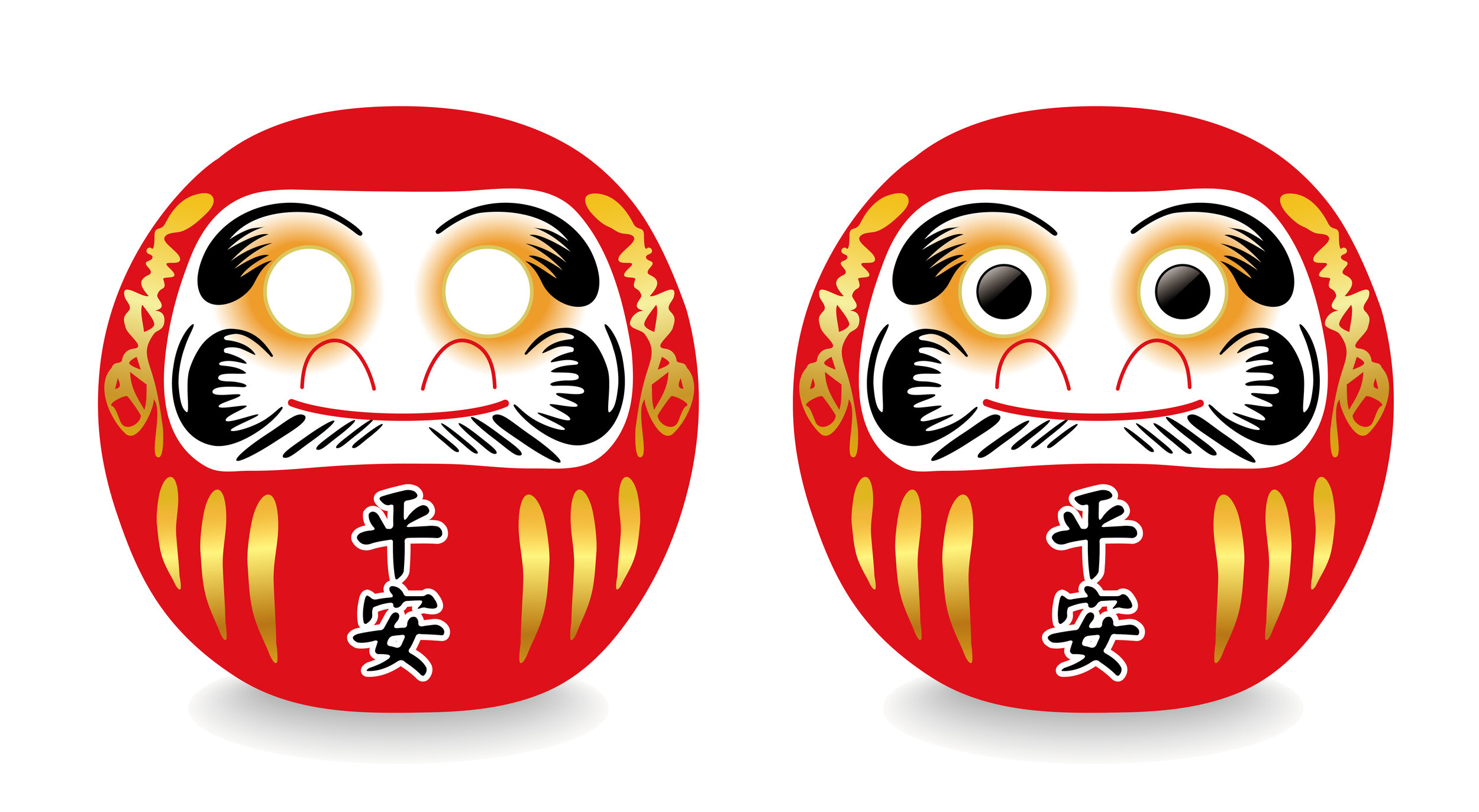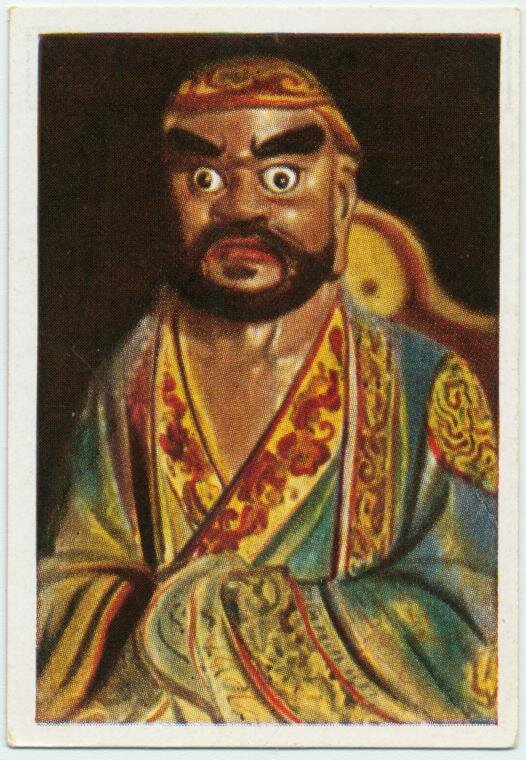Daruma: A Wishing Doll with a Thousand-Yard Stare
The Daruma doll isn’t exactly a good luck charm. It’s a “wishing doll” modeled on Bodhidharma, the founder of Zen Buddhism. Daruma is a symbol of perseverance, and he’s included here because he’s positive, motivational and resilient. A Japanese proverb closely associated with Daruma’s roundness is: Nana korobi ya oki (roughly translated: Fall down seven times, stand up eight.) In other words, resilience and determination are the keys to success.
According to legend, Bodhidharma spent nine years in deep meditation staring at a blank wall (hence the blank eyeballs). During his long meditative retreat, Daruma was the subject of all sorts of temptations from demons, and rats chewed on his ears and other body parts. When he finally attempted to rise from his position of meditation, he discovered that his legs had withered away to nothing. For this reason, he is always depicted without legs. Artists have also removed his arms, but his undaunted spirit remains.
Most Daruma dolls are red because it’s believed that Bodhidharma wore red robes, but they come in a variety of colors these days. His eyebrows are painted to look like cranes and his beard is painted to resemble tortoises because these animals represent longevity. There are also female versions of Daruma (onna-Daruma) and a snow-man Daruma (yuki-Daruma), which — in The House’s opinion — resembles the Grimace.
During the lunar new year, many Japanese individuals and corporations buy a Daruma doll, make a resolution, and then paint in one of the eyes. If, during the year, they are able to achieve their goal, they paint in the second eye. At year’s end, it is customary to take the Daruma doll to a temple, where it is burned in a big bonfire.
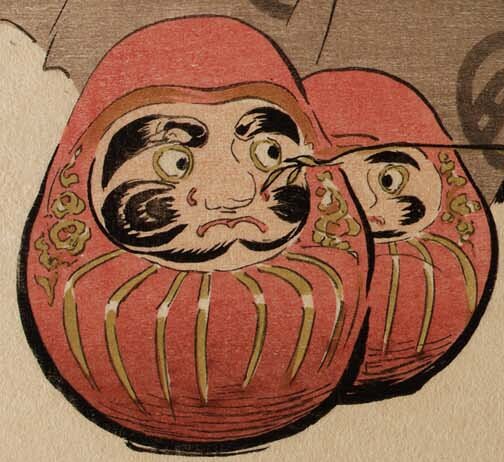
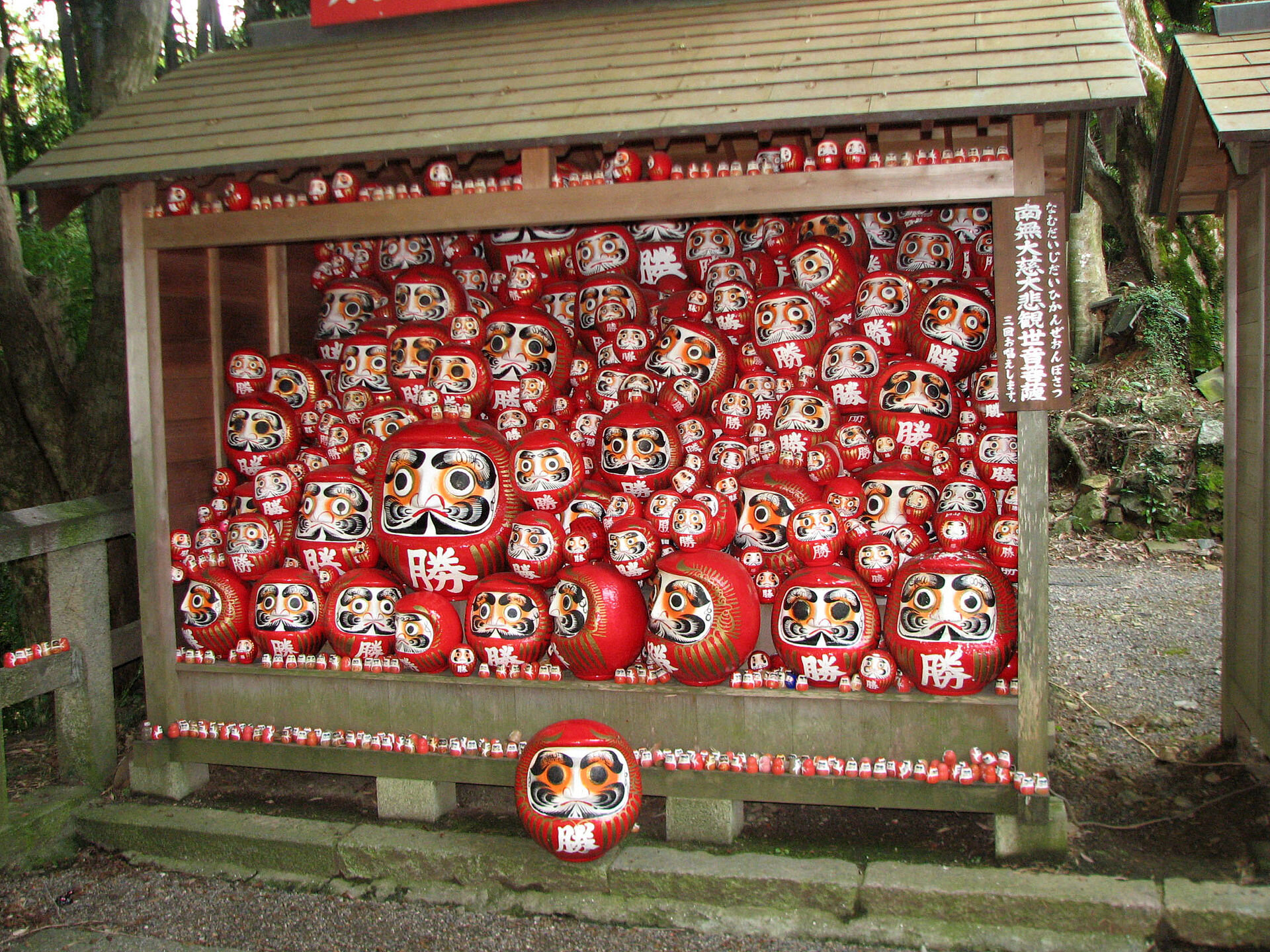
Bodhidharma Cigarette Card, New York Public Library Digital Collection
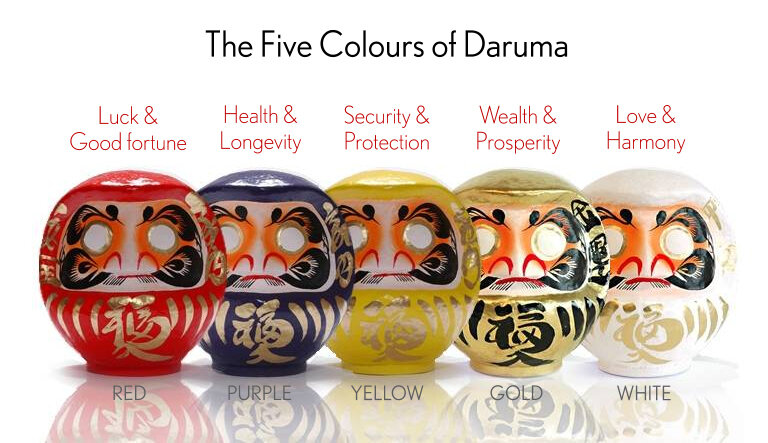
The Five Colors of Daruma

Yukidaruma, made of snow. Looks like The Grimace.

Lady Daruma (Daruma Onna)

Glass Bead Daruma, Mingei International Museum
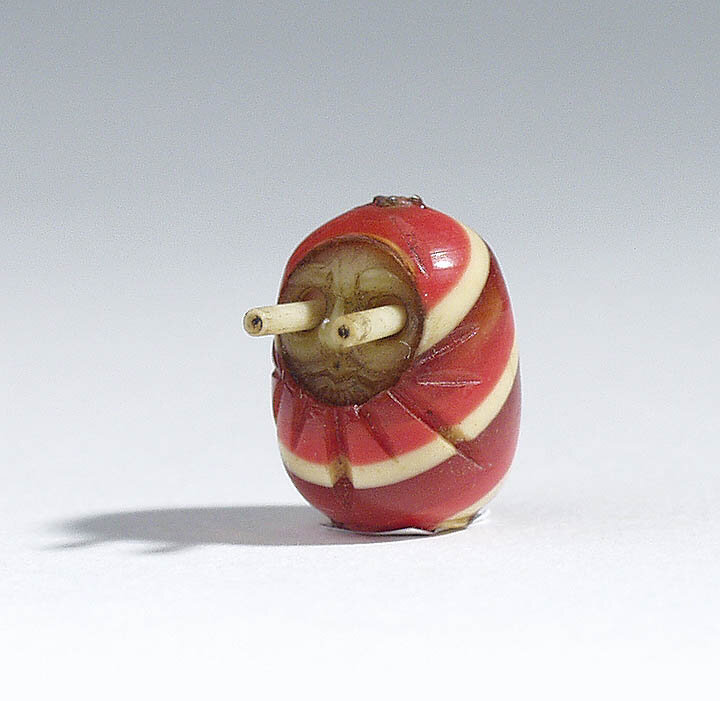
Glass Bead Daruma with pop-out eyes, Mingei International Museum
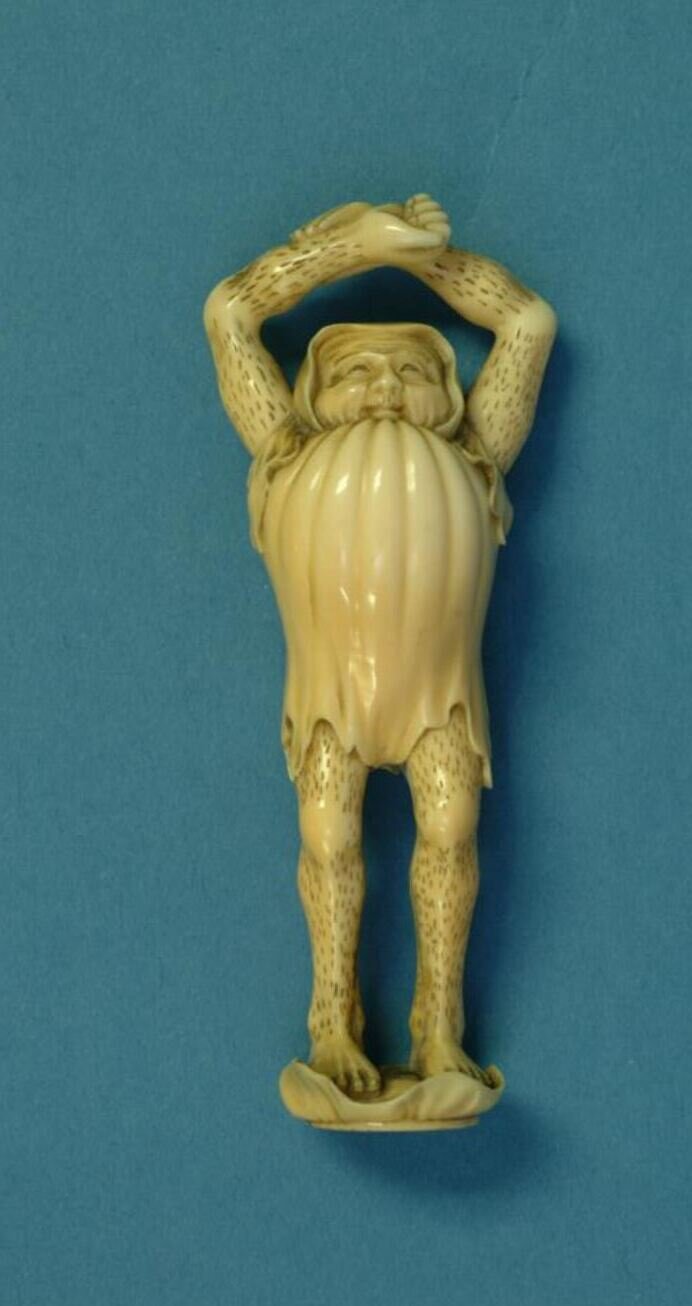
Daruma with arms and legs
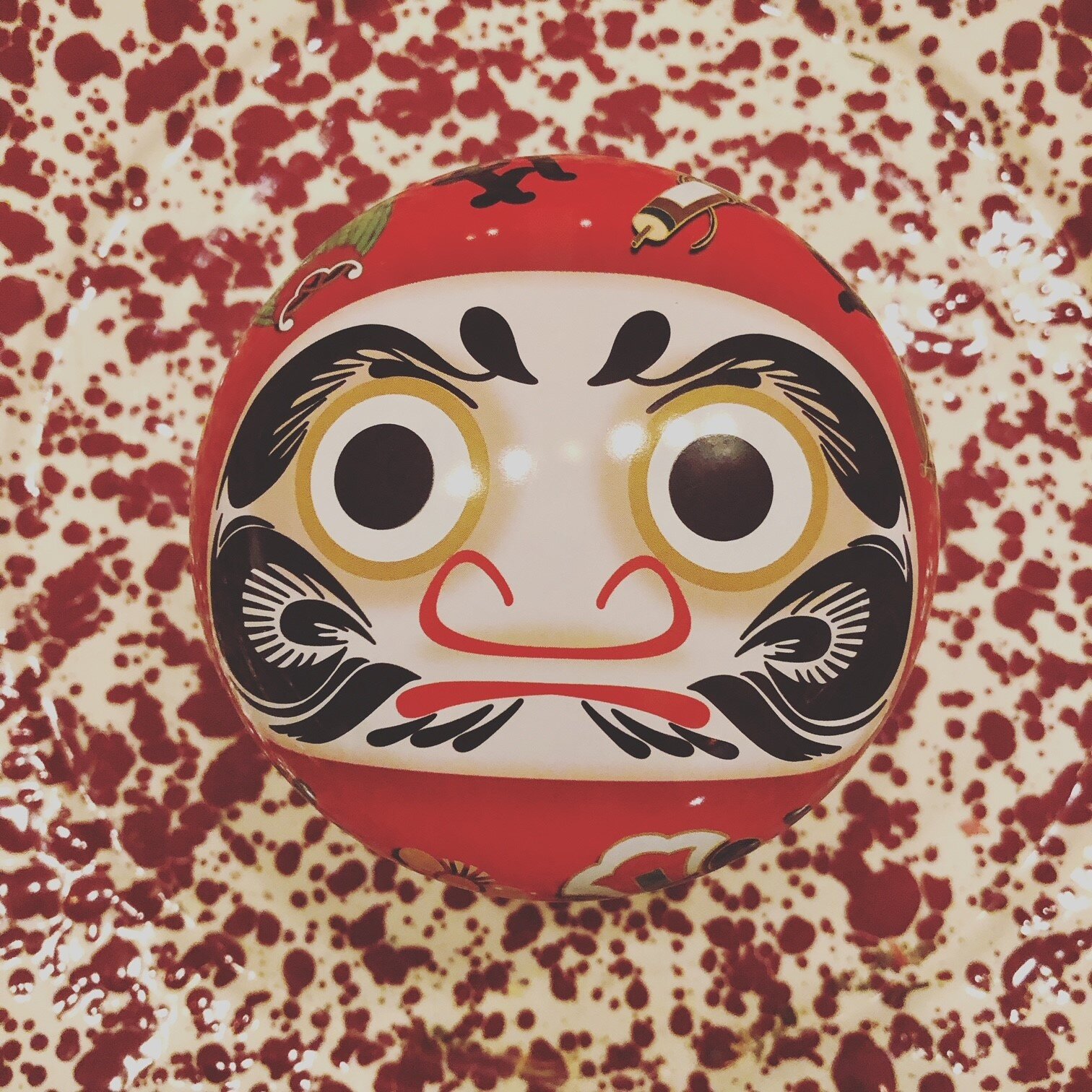
Daruma Tea Holder, House of Good Fortune Collection
Daruma, Clay, Kyoto, Japan, Mingei International Museum.
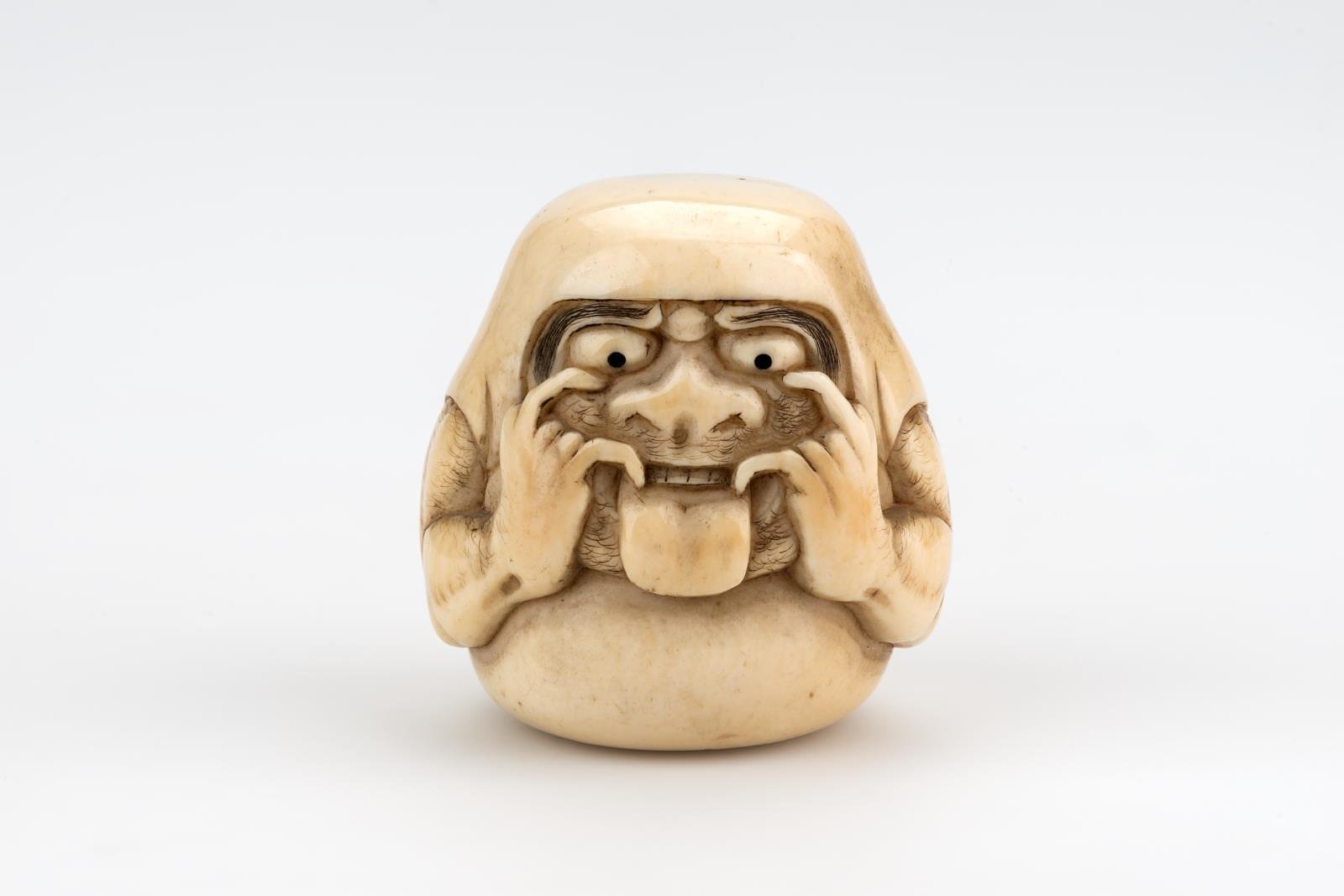
Daruma netsuke

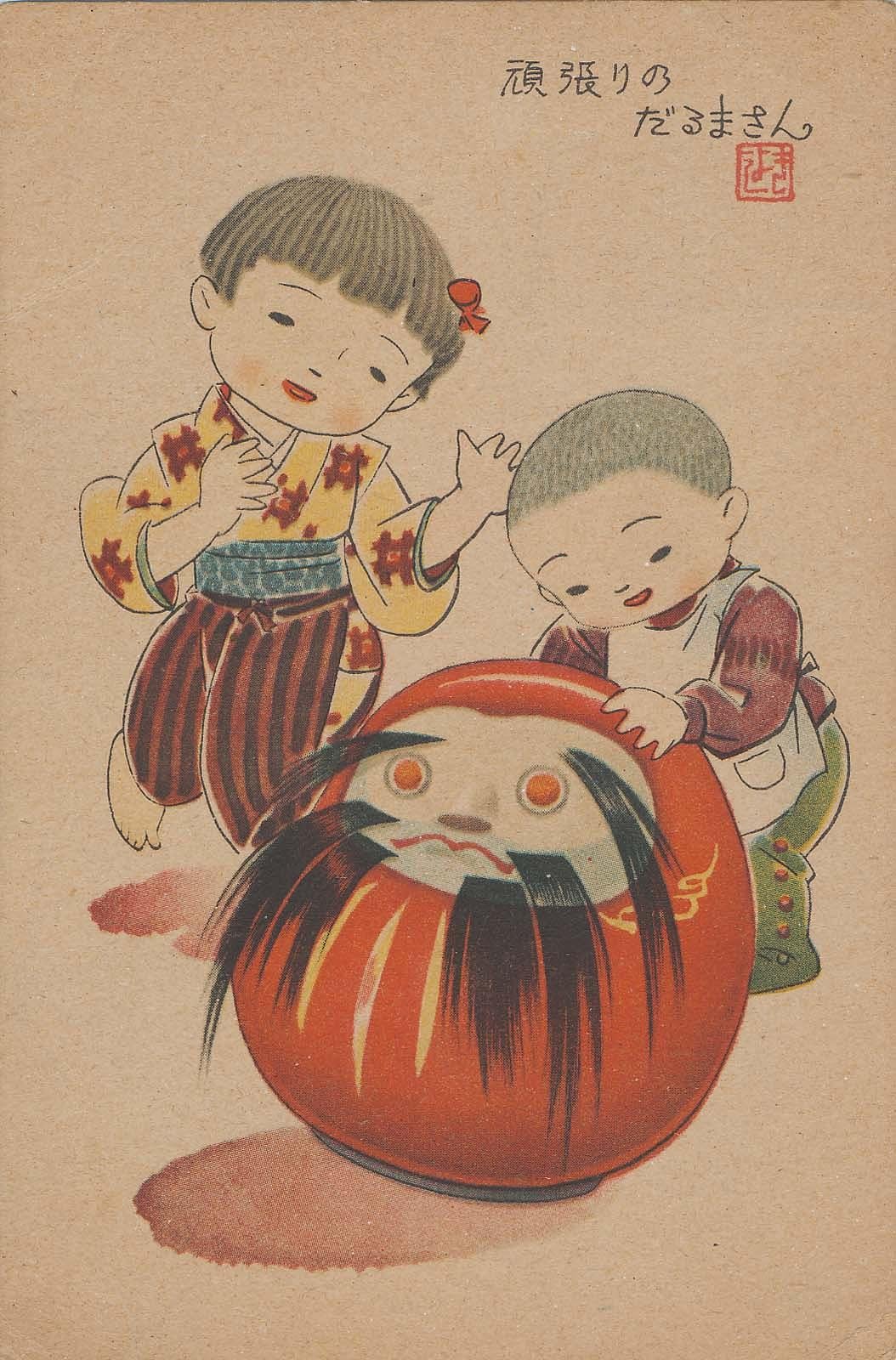
Postcard depicting children playing with daruma doll, Museum of Fine Arts, Boston



Green Daruma, House of Good Fortune Collection

Daruma, Mingei International Museum

Large "Traffic Safety" Daruma; Kyoto, Japan


